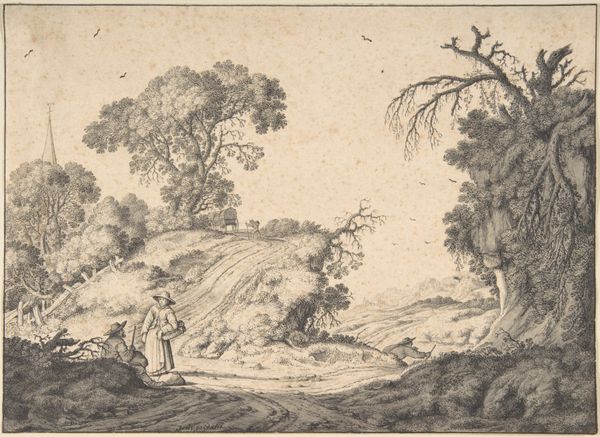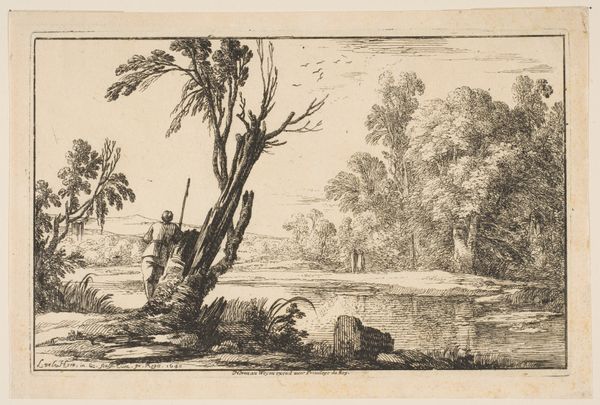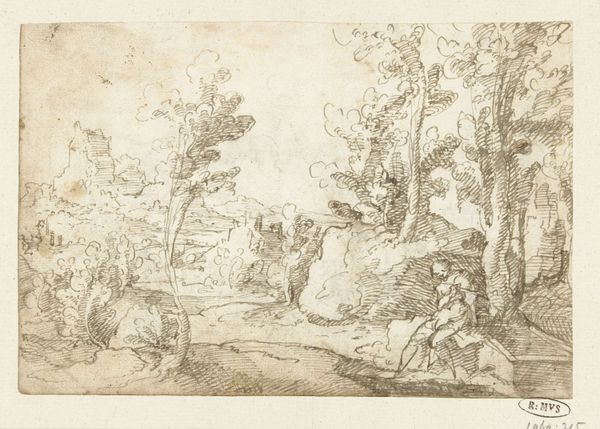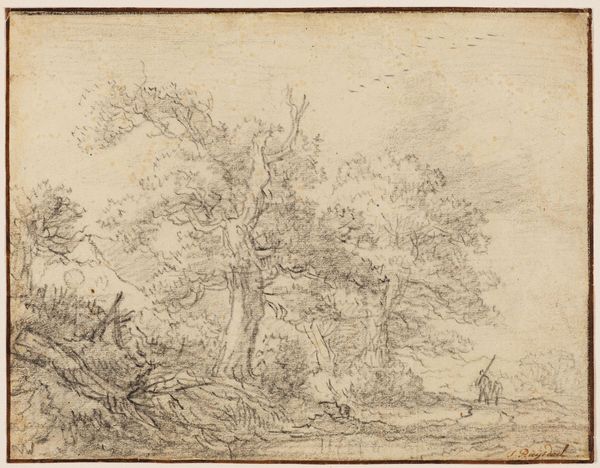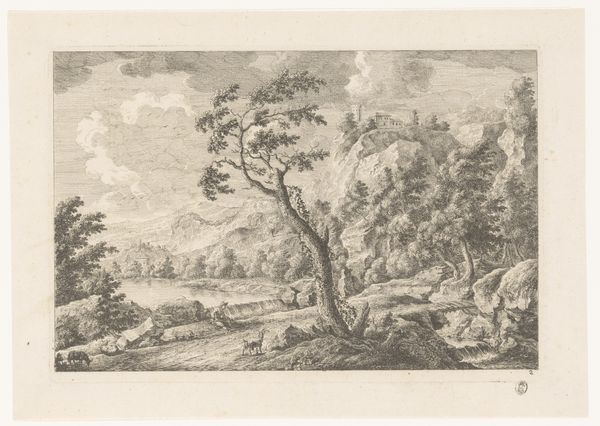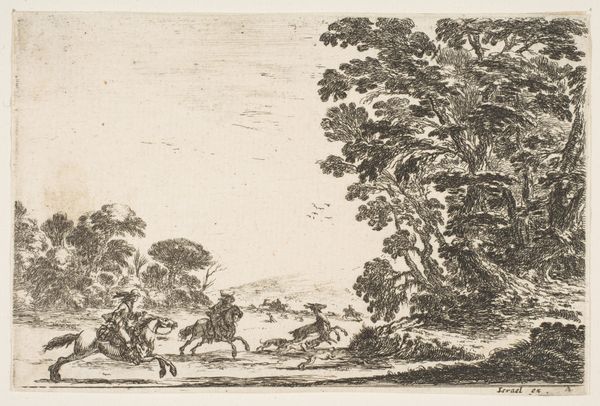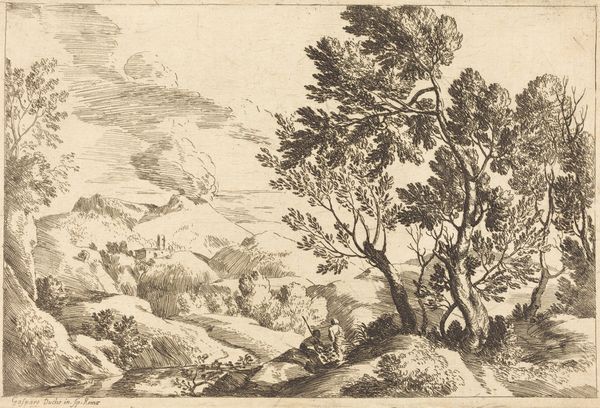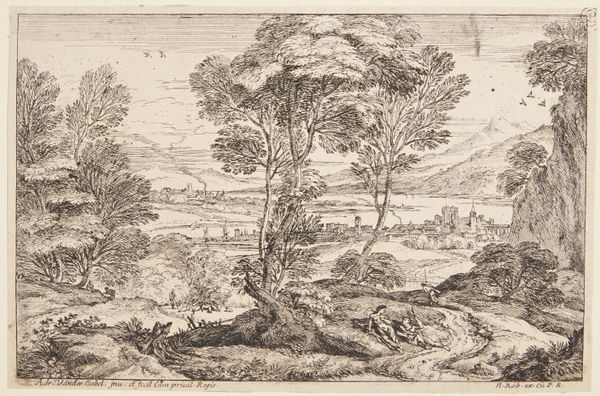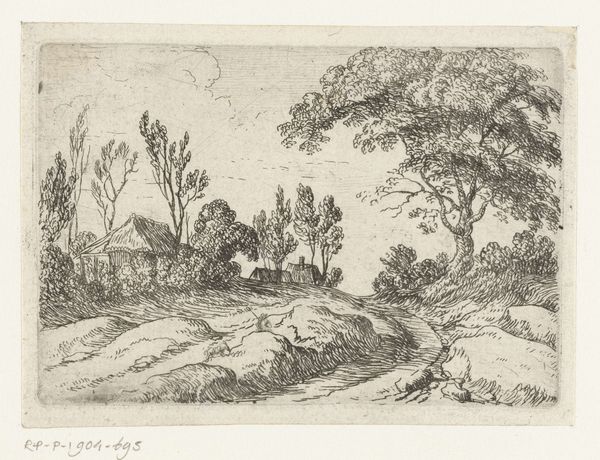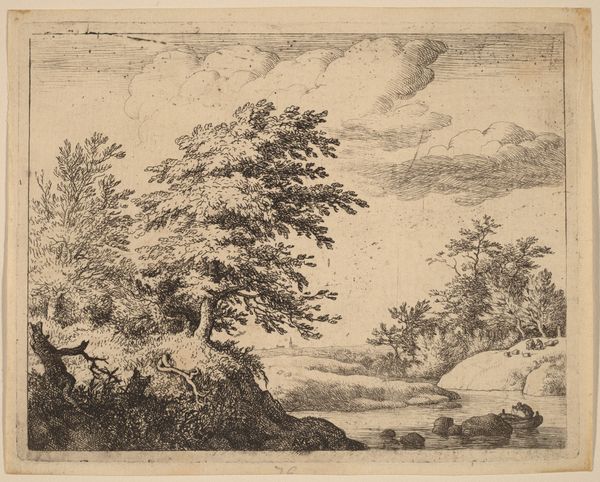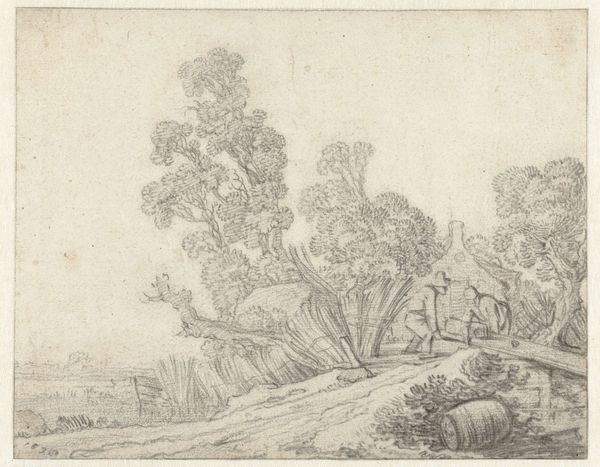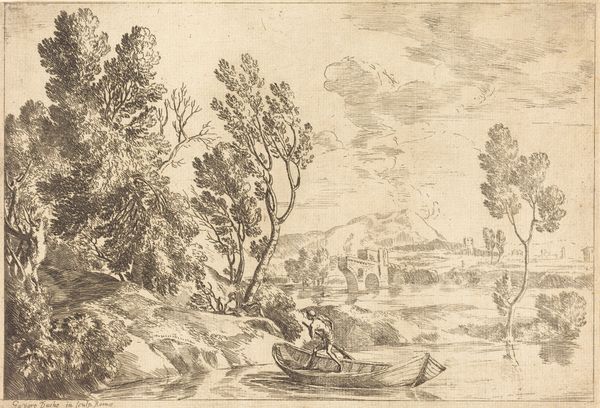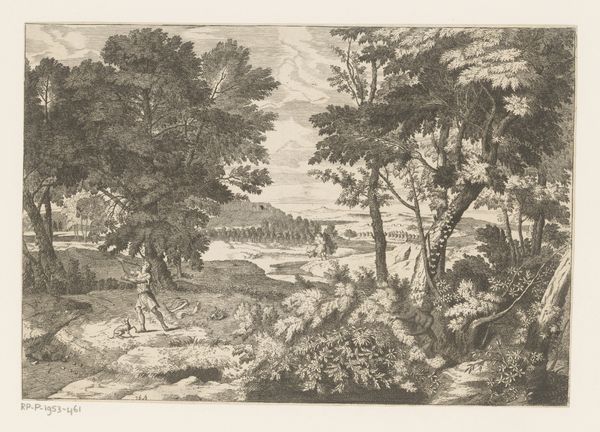
drawing, print, etching
#
tree
#
drawing
#
baroque
# print
#
pen sketch
#
etching
#
pencil sketch
#
landscape
#
river
#
forest
#
line
Dimensions: sheet: 3 1/8 x 4 3/4 in. (8 x 12 cm)
Copyright: Public Domain
Editor: So, this is "River in the Woods" by Laurent de La Hyre, dating back to between 1606 and 1656. It’s an etching, housed here at the Met. The texture is just incredible – it looks almost like a very detailed pen sketch. What strikes you when you look at this piece? Curator: The etching process is key here. Consider the labor involved: the artist meticulously layering lines onto a metal plate. How does that reproductive process—a technique accessible to many printmakers of the era—democratize landscape imagery? This wasn’t a unique painting for a wealthy patron; it could be reproduced and distributed. What does that say about art's function in society? Editor: That’s a really interesting point. I hadn't thought about the accessibility of the medium itself. So, the material and method change who could experience and consume art? Curator: Exactly! Furthermore, look at what’s depicted: a rather commonplace river scene. No grand historical allegory or aristocratic portrait. By focusing on accessible materials, the etching plate, and everyday subjects—laborers by the river, simple forest—La Hyre invites a broader audience and potentially challenges established hierarchies in art. How does it contrast with painting traditions in baroque? Editor: Baroque painting aimed for grandeur and drama. This is much quieter, focused on the working process and what emerges during production as well. Curator: Indeed! The rough textures, the lines upon lines; you can almost sense the artist’s hand at work and even nature as active labor force. This etching serves as a material testament to production, artistic intention, cultural forces, and nature’s part in art. What could you say about "consuming" of this image now? Editor: I think seeing the piece this way reveals how tied art can be to its time – not just in what it shows, but in how it was made, for whom, and what that meant. Curator: Precisely! Viewing the material conditions allows us a potent insight to interpret even these beautiful river image with different perspectives.
Comments
No comments
Be the first to comment and join the conversation on the ultimate creative platform.
